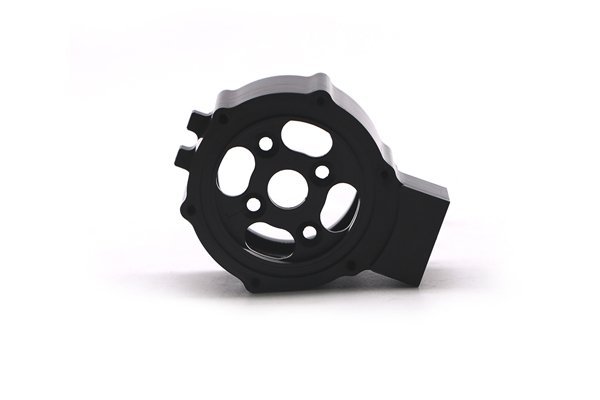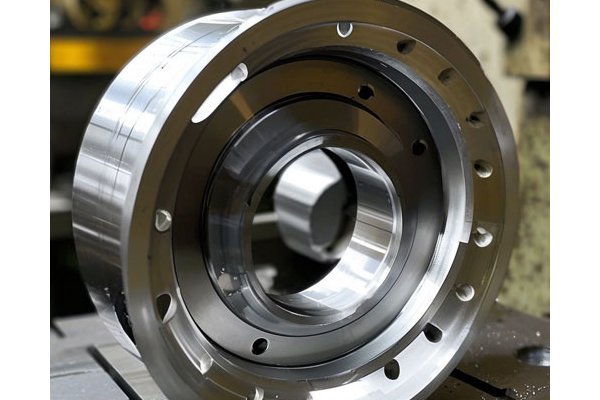When it comes to CNC machining, the choice of material can make all the difference in the success of a project. Did you know that nearly 30% of all machining failures are attributed to the choice of material? This statistic highlights the critical importance of selecting the appropriate material, especially when dealing with engineering plastics.
In today’s world, many industries are increasingly moving toward using engineering plastics for various applications. Known for their lightweight, strong, and versatile properties, engineering plastics have become indispensable in sectors ranging from automotive and aerospace to medical devices and consumer electronics. But what exactly are engineering plastics, and how can they be effectively utilized in CNC applications?
This blog aims to provide you with an in-depth understanding of the characteristics of engineering plastics, the benefits they offer in CNC machining, and the challenges you may encounter. We will discuss processing methods, design considerations, and key techniques that can optimize CNC machining when using these materials. So buckle up as we explore the intricate world of engineering plastics!
Understanding Engineering Plastics

Engineering plastics are a category of thermoplastics that possess superior mechanical and thermal properties compared to commodity plastics. Some widely recognized engineering plastics include:

Each type of engineering plastic exhibits unique characteristics that make it suitable for specific CNC applications.
Key Characteristics of Engineering Plastics
Engineering plastics are designed to withstand high stress and strain, providing exceptional strength and durability. For example, Nylon is known for its toughness, making it ideal for applications that require resistance to impact and wear.
Many engineering plastics can operate efficiently at elevated temperatures. Materials like Polycarbonate maintain structural integrity even under heat, making them invaluable in automotive and electrical applications.
Engineering plastics exhibit high resistance to chemicals, oils, and solvents. For example, POM is commonly used in automotive parts due to its resistance to fuel and lubricants.
Certain engineering plastics, such as POM, have low friction coefficients, making them suitable for applications where reduced wear and tear are critical, such as in gears and bearings.
These materials can be easily molded into complex shapes and forms, allowing for rapid prototyping and customized designs tailored to specific applications.
Many engineering plastics are excellent electrical insulators. This characteristic makes materials like Polycarbonate useful in electrical components and housing.
Advantages of Using Engineering Plastics in CNC Machining
Opting for engineering plastics in CNC machining comes with a plethora of benefits:
Engineering plastics are significantly lighter than metals like aluminum and steel, contributing to weight savings in automotive and aerospace applications. This reduction translates into better fuel efficiency and performance.
While engineering plastics may have a higher upfront cost in some cases, they often reduce overall production costs through less wear on tools, improved machining speeds, and decreased energy consumption.
The inherent properties of engineering plastics help in reducing noise and vibrations, making them suitable for applications requiring sound insulation, like automotive interiors.
Engineering plastics can be produced in various colors and finishes, providing manufacturers the flexibility to achieve desired aesthetics without additional painting or coating steps.
Challenges in CNC Machining of Engineering Plastics
Even though engineering plastics have multiple advantages, they come with certain challenges that need to be addressed for successful CNC machining:
Engineering plastics generally have higher coefficients of thermal expansion, which can cause dimensional changes during machining. Understanding the thermal properties is essential for tolerances and fit.
The choice of cutting tool is critical. Using unsuitable tools may lead to faster wear or poor surface finish. Therefore, selecting tools specifically designed for machining plastics is essential.
Machining speeds and feed rates must be adjusted appropriately for engineering plastics to prevent melting or deformation. Testing and optimization are key.

Achieving the ideal surface finish can be challenging due to the soft nature of some engineering plastics. This either requires careful tool use or additional finishing processes.
CNC Machining Process for Engineering Plastics
To effectively machine engineering plastics, several best practices should be followed:
Before commencing CNC machining, selecting the appropriate type of engineering plastic is crucial based on your application. Ensuring the material is free from defects and contaminants helps improve machining results.
Utilize specialized cutting tools that are specifically made for machining plastics. High-speed steel or carbide tools with sharp edges are recommended to avoid melting or deforming the material.
Experiment with different feed rates and spindle speeds to find the optimal settings. Generally, lower speeds are preferable for softer plastics, while higher speeds can be used for tougher materials.
Unlike metals, engineering plastics often do not require cooling when machining. However, if excess heat becomes an issue, consider the use of air cooling or mist cooling techniques.
Depending on the application, surface finishing may be required after machining. Techniques like sanding, polishing, or chemical smoothing can be employed to obtain the desired appearance and performance.
Establishing a robust quality control process is essential when working with engineering plastics. Regular checks can prevent downstream failures and ensure that all dimensional tolerances are met.
Design Considerations for CNC Machining with Engineering Plastics
When designing parts meant for CNC machining using engineering plastics, certain factors should be taken into account:
Maintaining consistent wall thickness throughout the design helps ensure structural integrity. Incorporating ribs can enhance strength without adding unnecessary weight.
Understand the thermal expansion properties of the chosen material and design tolerances accordingly to ensure proper fits.
Avoid overly complex features that may complicate the CNC machining process. Simplicity often leads to better results in terms of precision and reduced machining time.
Recognizing how the properties of engineering plastics will perform in their intended application is critical. For example, parts exposed to high stress should be reinforced or designed with high-strength materials.
Case Studies: Engineering Plastics in CNC Applications
Engineering plastics such as POM and Nylon are widely used for making automotive components, including fuel tanks, gears, and dashboards. Manufacturers appreciate the lightweight properties, which help improve fuel efficiency without sacrificing strength.
Polycarbonate is often utilized in medical devices due to its clarity, strength, and ability to withstand sterilization processes. CNC machining allows for precise customization of these critical components.
Engineering plastics like PEI (Polyetherimide) are vital in the aerospace sector for interior components due to their heat resistance and lightweight properties.
Understanding the characteristics and advantages of engineering plastics in CNC machining not only improves the quality of finished parts but also opens up new avenues for innovation across various industries. With the right tooling, machine settings, and design considerations, CNC machinists can effectively utilize these versatile materials while overcoming the challenges that may arise.
In summary, the key to successful CNC machining of engineering plastics lies in:
As industries continue their journey toward lightweight materials and cost-effective solutions, engineering plastics will play a pivotal role. By adopting the techniques presented in this blog, aspiring and established CNC machinists can enhance their expertise and drive successful outcomes in their projects.
So, the next time you think about materials in CNC applications, remember the incredible potential of engineering plastics and consider how they could transform your next machining project!




